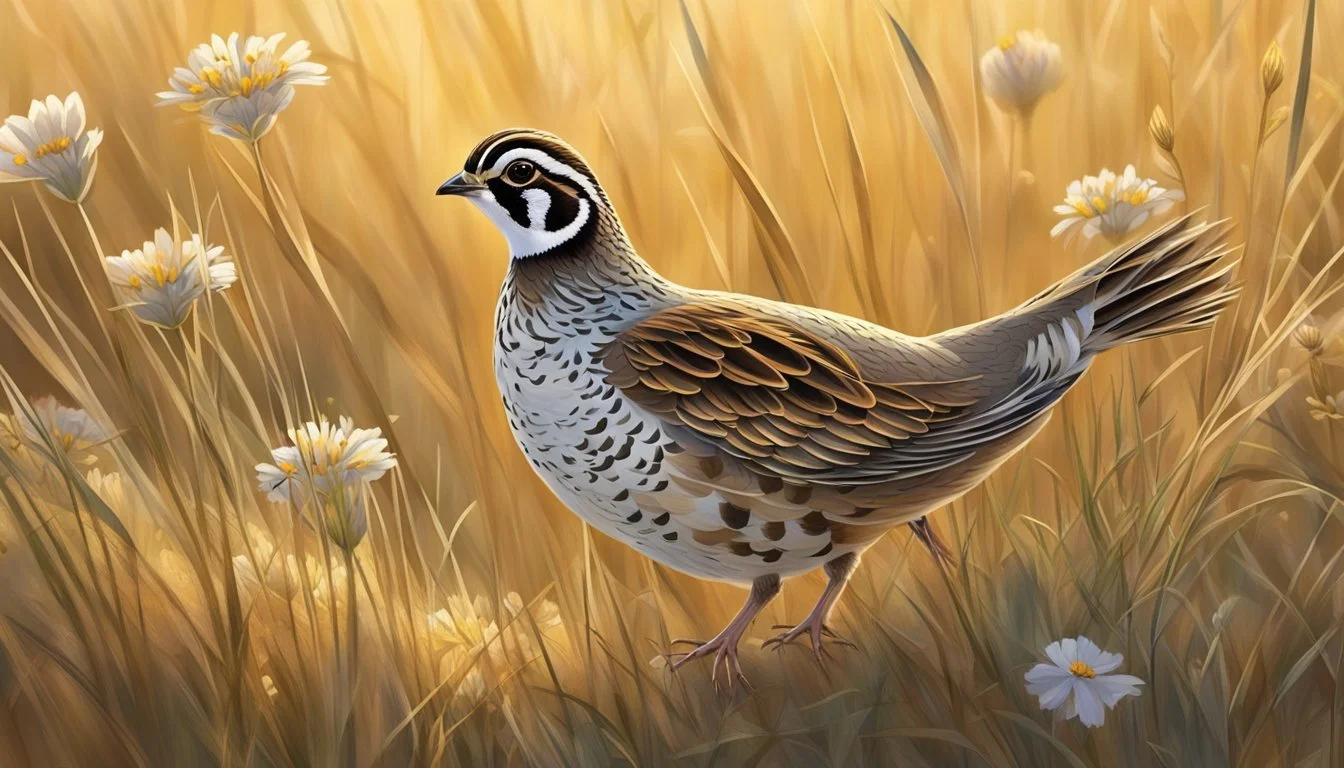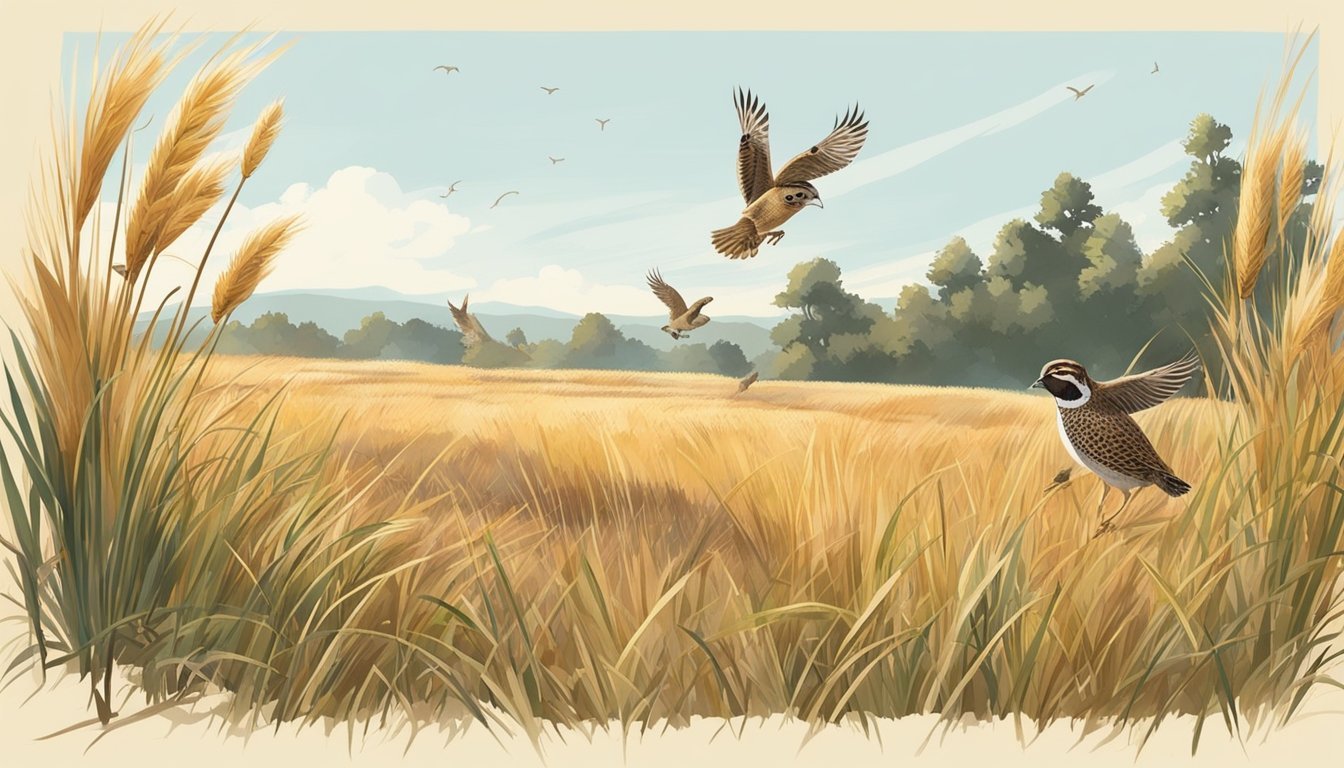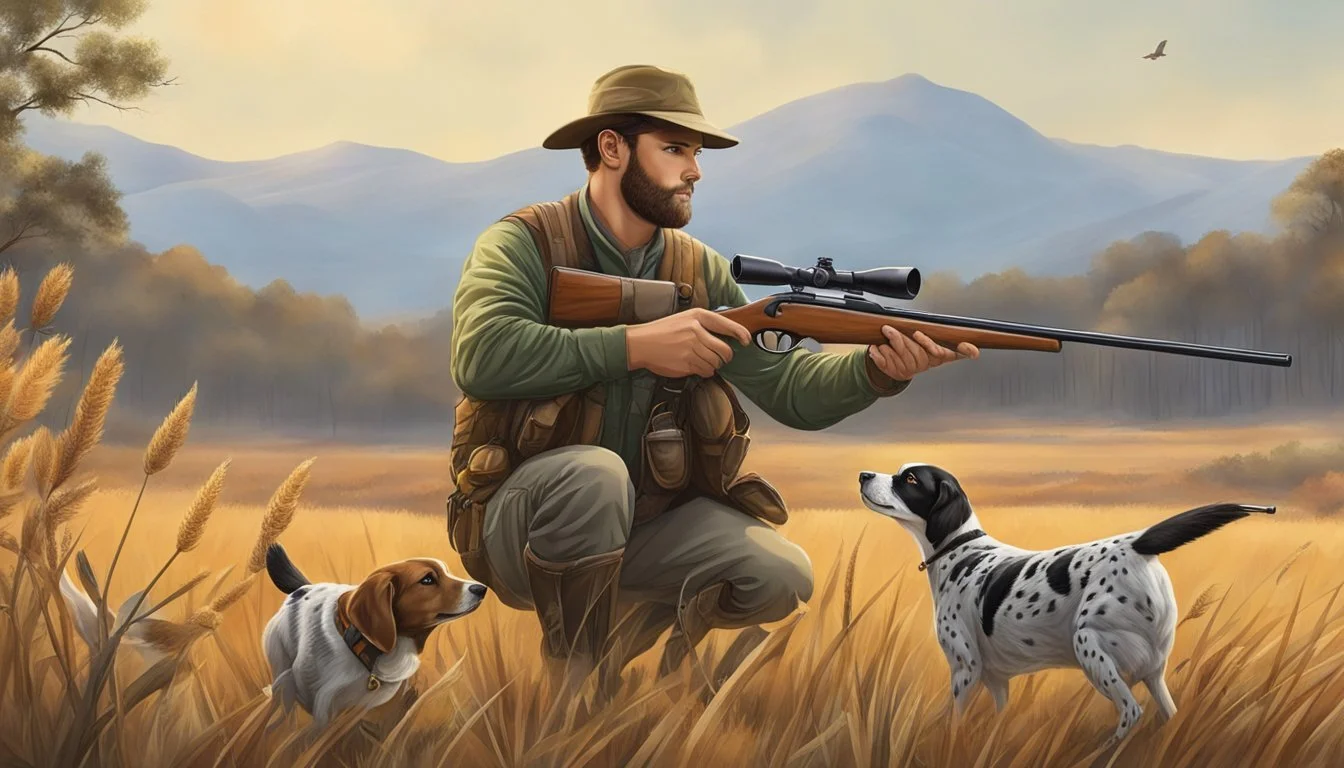Bobwhite Quail Hunting for Beginners
Essential Tips for First-Time Hunters
Bobwhite quail (What wine goes well with quail?) hunting is a valued tradition in North America, attracting outdoor enthusiasts with its unique blend of sport and conservation. Known for their plaintive whistling calls and sudden, explosive flushes, bobwhite quail provide a challenging yet rewarding experience for hunters. This upland game bird thrives in a variety of habitats, from the grassy fields of the Midwest to the plantation pines of the Deep South, making the pursuit accessible to many.
Newcomers to bobwhite quail hunting should understand the importance of habitat and the bird's behavioral patterns. The bobwhite's needs are relatively straightforward, requiring a mix of herbaceous vegetation and shrubby cover, with patches of bare ground. This mixed habitat supports their nesting preferences and offers abundant food sources such as seeds and insects. Hunters should focus on these environments when seeking out these elusive game birds.
In terms of equipment, an appropriate shotgun is a fundamental requirement for pursuing bobwhite quail. Smaller gauges like the .410 to the 28 gauge are often preferred for their lighter weight and reduced recoil, which provides an advantage during the fast action of quail hunting. Mastery of these tools, along with an understanding of the quail's habitat and behavior, sets the stage for a successful and ethical hunting experience.
Bobwhite Quail Basics
This guide focuses on the essential aspects of bobwhite quail, including their behavior, habitat requirements, and the importance of conservation efforts to sustain their populations.
Understanding Bobwhite Quail
The bobwhite quail, a small ground-dwelling bird native to North America, is a popular game species among hunters. It exhibits a characteristic whistling call, which is the source of its name. These birds are social, typically found in groups known as "coveys" that can range from a few to over a dozen individuals in the fall and winter months.
Habitat Requirements
Bobwhite quail thrive in a mosaic of habitats, which must include the following elements:
Herbaceous vegetation: Ideal for nesting and foraging, primarily composed of grasses and forbs.
Shrubby cover: Provides protection from predators and harsh weather, often including thickets of wild plum, dogwood, or sumac.
Bare ground: Crucial for feeding, as it allows quail to access seeds and insects.
Their preferred environments are characterized by grasslands mixed with early successional habitats such as those found in longleaf pine savannahs of the Southeast.
Conservation and Population Management
Bobwhite quail numbers have faced significant declines due to usable habitat loss and changes in land use. Conservation efforts are crucial to reverse these trends. Management strategies include:
Habitat restoration: Reintroducing fire regimes to manage forests, establishing native grasses, and creating buffer zones in agricultural areas with natural resources.
Population monitoring: Keeping track of quail numbers to assess the effectiveness of conservation measures and inform future actions.
Understanding and addressing the habitat needs of bob white quail are essential steps in recovering and sustaining their populations across their native range.
Preparing for the Hunt
In bobwhite quail hunting, success begins with preparation. The aspiring hunter needs to be equipped with the right gear, understand the indispensable role of dogs, and be up-to-date with the necessary licenses and legalities.
Choosing the Right Gear
When it comes to gear, selecting a shotgun is primary. The most recommended gauges for quail hunting are 20-gauge and 28-gauge, as they offer a balance between firepower and manageability. It's vital to pair the shotgun with the appropriate choke, typically improved cylinder or modified, to maintain an effective shot pattern.
Ammunition should be chosen with care; No. 7 1/2 to No. 8 shot sizes are optimal for bobwhite quail. In terms of clothing, camouflage helps a hunter blend into the environment, but it’s essential to include blaze orange for safety, making one visible to other hunters.
A smart tool for modern hunters is onX Hunt, a GPS app that helps track locations and land boundaries, ensuring that one stays within legal hunting grounds.
Role of Bird Dogs in Quail Hunting
Bird dogs are invaluable in locating and retrieving during a quail hunt. Breeds such as the English Pointer or the German Shorthaired Pointer are favored for their keen sense of smell and agility. They should be trained to be steady to shot, which means they hold their position when a bird is down until given a command.
Dogs not only increase the likelihood of finding quail but also add a layer of companionship and efficiency to the quail hunt.
Hunting Licenses and Legal Considerations
Before stepping out into the field on the hunt for wild quail, a hunter must have a valid hunting license, which may require completing a hunter education course. Regulations like bag limits, hunting hours, and season dates vary by state and must be followed closely.
Utilizing resources like the onX Hunt app to understand property boundaries is not just a matter of ethics; it’s also a legal requirement to prevent trespassing. Always have a clear understanding of the laws in the hunting area.
Quail Hunting Techniques
To successfully hunt bobwhite quail, a hunter should understand effective techniques for locating these birds, recognize their behavior patterns to prompt a flush, and master the appropriate shooting skills while maintaining safety.
Locating Quail
Bobwhite quail favor areas with a mix of herbaceous vegetation, shrubby cover, and bare ground, providing them with essential nesting and foraging opportunities. Quail hunters should look for:
Grassy fields with forbs and insects, where quail typically feed.
Edges of fields, especially near soybean crops or native grass corridors.
Woody cover, such as clusters of wild plum, dogwood, or sumac for shelter.
Using pointing dogs can be extremely helpful in locating a covey of quail as these trained dogs can detect and indicate their presence.
Quail Behavior and Flushing
Understanding the behavior of bobwhites is key to a successful flush. A "covey rise," the collective flush of a group of quail, typically occurs when quail are startled or feel threatened. To prompt this:
Walk through likely quail habitat areas in a zigzag pattern to surprise quail.
Be patient and observe quail signs such as tracks or droppings.
Use the presence of pointing dogs which can trigger quail to flush when they feel encircled.
Wild quail usually flush with a burst of speed in an attempt to escape their habitat conditions, so be prepared for rapid movement.
Shooting Skills and Safety
When quail are flushed, they emerge quickly, requiring steady and skilled shooting. Quail hunters should:
Choose the right shotgun choke; a modified choke tube is often recommended for its versatility in various ranges.
Practice shooting clay pigeons to simulate the flight pattern of flushing quail.
Always adhere to safety regulations, keeping the gun pointed in a safe direction and being mindful of other hunters.
Safety is paramount in quail hunting, so ensure that each shot is taken with full awareness of your surroundings.
Hunting Environments
In bobwhite quail hunting, the environment where the hunt takes place plays a pivotal role in the success and experience of the hunter. This includes the type of land, the geographical region, and managing the impacts of hunting pressure.
Managing Hunting Pressure
To maintain sustainable quail populations, managing hunting pressure is imperative. Hunting pressure refers to the impact of hunting activities on wildlife. Public lands might see higher pressure due to ease of access, while private lands can manage pressure with regulated hunting schedules. Availability and hunter density in states such as Texas and South Dakota can affect the bird's behavior, often making them more elusive..
Contribution to Conservation
Conservation Programs: Participation in initiatives such as the Conservation Reserve Program (CRP) enhances habitat for bobwhite quail. This government-backed scheme incentivizes landowners to convert agricultural land into natural habitats, creating crucial food and shelter for wildlife.
Habitat Requirements: Hunters play a direct role in conservation by preserving vital elements like food sources, water, and shelter. This may involve supporting grassland restoration to ensure ample nesting space and engaging in practices that sustain a balanced ecosystem. By investing in habitat management, hunters ensure sustainable populations of bobwhite's for future generations.
Advanced Topics
In pursuing a more comprehensive understanding of bobwhite quail hunting, enthusiasts often explore the finer points of game management and dog work. This section addresses the complexities of breeding and training, essential for those invested in the entirety of the hunting experience.
Working with Pointers and Retrievers
Integral to the hunt, bird dogs such as pointing breeds and retrievers escalate the chances of a successful outing. Training them to work together seamlessly requires time and patience. English pointers, in particular, are renowned for their agility and the instinctive ability to locate and point to the game, while retrievers are invaluable for their adeptness at recovering downed birds.
Roles of Bird Dogs
Pointers: They locate and point toward the game, standing still to signal the hunter.
Retrievers: Once the game is down, they swiftly locate and return it to the hunter.
By maintaining the health of the quail population through breeding and tuning the skills of bird dogs, hunters ensure a sustainable practice and enriched hunting experience.
Quail Hunting Communities and Education
Participation in quail hunting communities and seeking out further education can provide essential tips and foster a deep understanding of upland bird hunting.
Upland Hunting Organizations: Many local and national organizations have programs and resources available for the aspiring quail hunter.
National Upland Bird Society: Offers seminars and meets for education.
Quail Hunter's Forum: An online community for discussion and advice.
Biologists and Wildlife Experts: Connecting with biologists or wildlife experts, especially those who specialize in upland birds, can provide scientific insights into habitat and quail behavior, enhancing the hunting experience.
Remember, while these resources can significantly aid in your hunting endeavors, it is the hunter's responsibility to ensure they are appropriately licensed and adhere to all hunting regulations and ethical guidelines.




